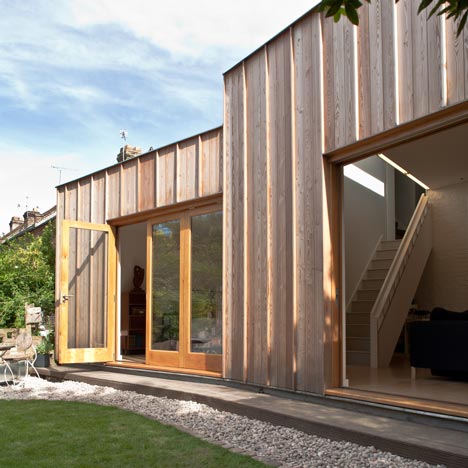
Timber Fin House by Neil Dusheiko
This extension to a north London home comprises three shed-like blocks clad in unfinished larch.
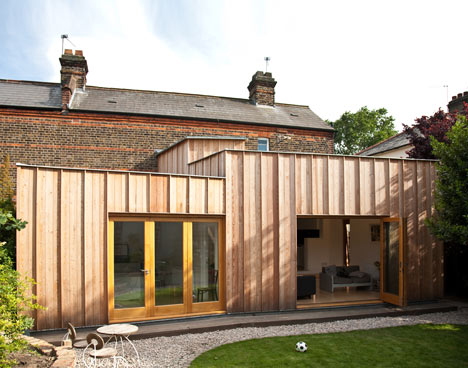
British architect Neil Dusheiko designed the single-storey structure for clients who wanted to add an extra living room and bedroom onto the rear of their house.
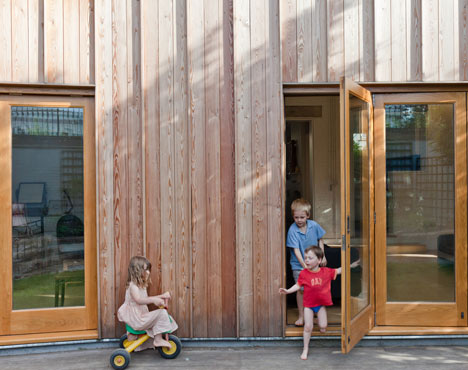
Oak-framed doors fold away from the rear timber wall to open both rooms out to the garden beyond.

A new staircase connects the landing of the house’s existing stairs to the garden, also creating a shortened route from the extra bedroom to the upstairs bathroom.
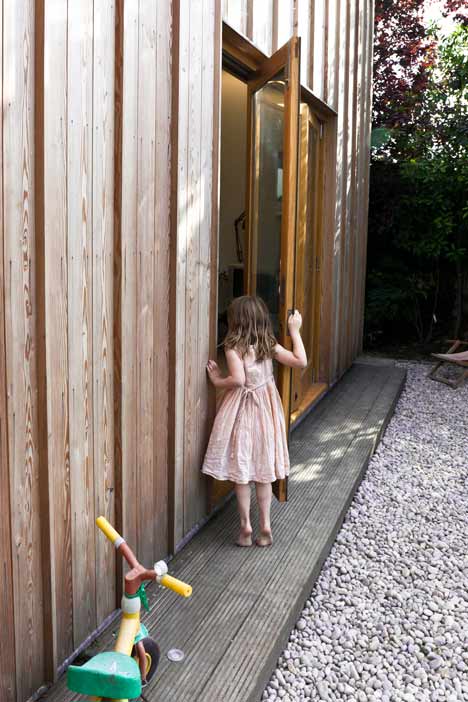
Narrow recesses in the ceiling around the stairs house fluorescent tube lights.
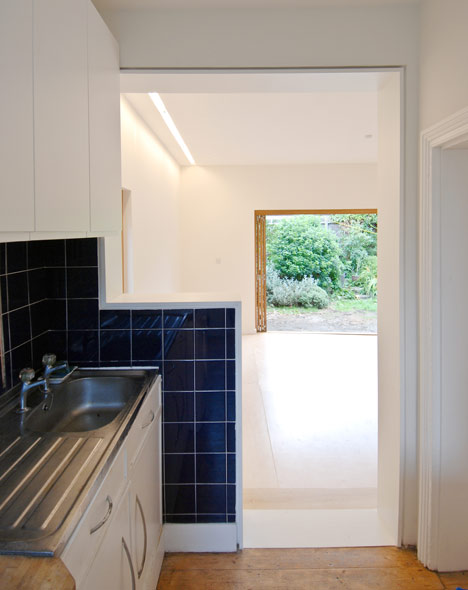
Some other memorable London extensions we’ve featured include one with a flower-covered roof and another that is half timber, half frameless glass.
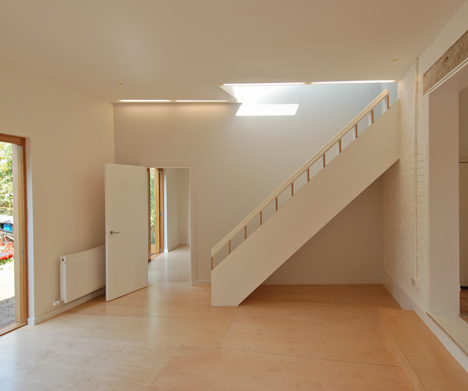
Photography is by Daryl Dusheiko.
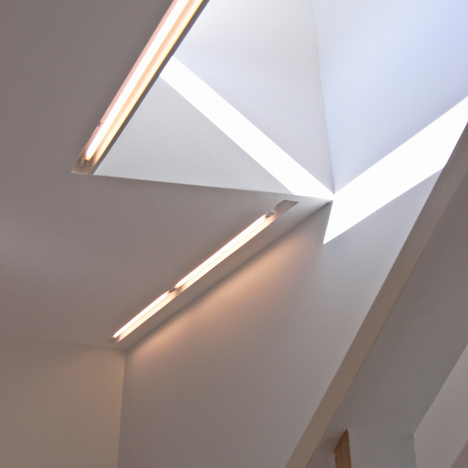
Here's a description of the project from Dusheiko:
Timber Fin House, Walthamstow
The project began one afternoon while sitting with the client on their existing terrace discussing ideas about how to create more space for the family in the tiny terrace house. We thought it would be interesting if the existing central staircase in the double fronted house, somehow continued up and over into the garden from the mid landing, and so the idea of extending the house came about.
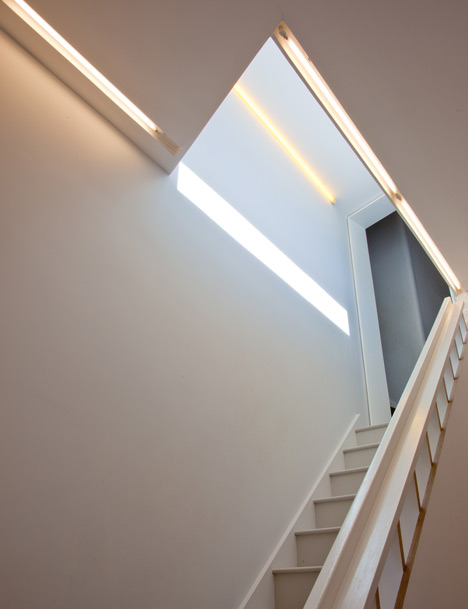
The clients wanted a house built entirely out of timber. The concept was to create a series of different volumes to accommodate the various functions in an informal stack of boxes placed next to each other like packing creates. The extension exists as three timber containers sitting next to and on top of one another with a singular nature borne out of using one material.
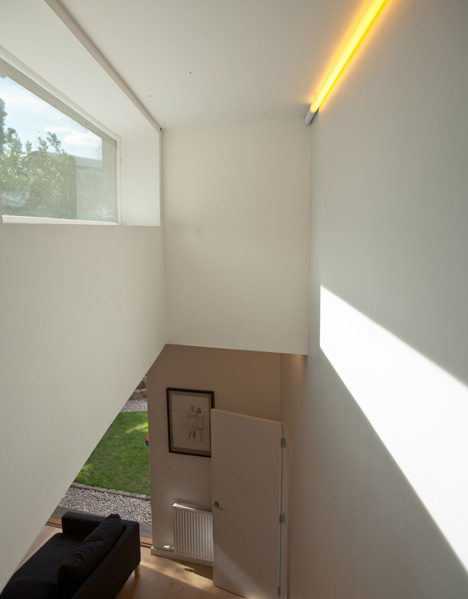
The west façade sits in its sub-urban context, visible to the street and announces its presence with a rhythm of vertical cladding, which in turn reflects the neighbourhoods use of closed board fencing and timber sheds.
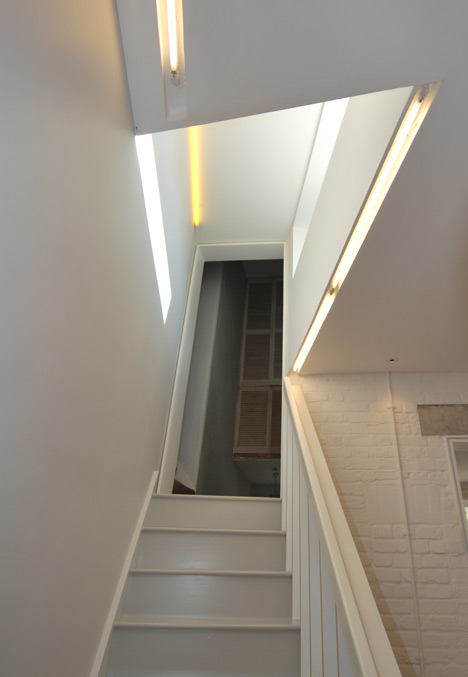
The north façade, facing the garden, has an asymmetrical geometry, with its two planes cranked to catch the evening sun and to hold the space in the garden. A rhythm of projecting fins reveals a subtle layering of the façade, which comes to life as the sun projects shadows across the façade.
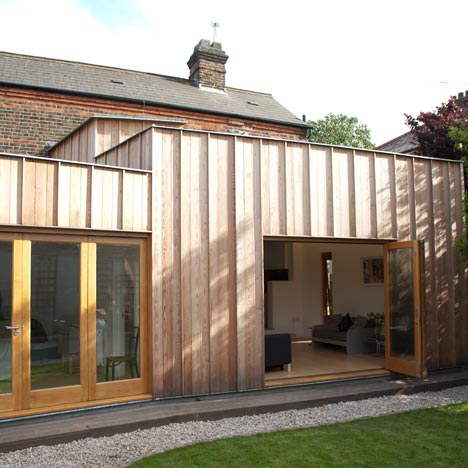
The material used for the floor was birch plywood and the structure is oak framed, clad in Siberian larch. The larch was is from sustainable sources and supplied by Vastern Timber.
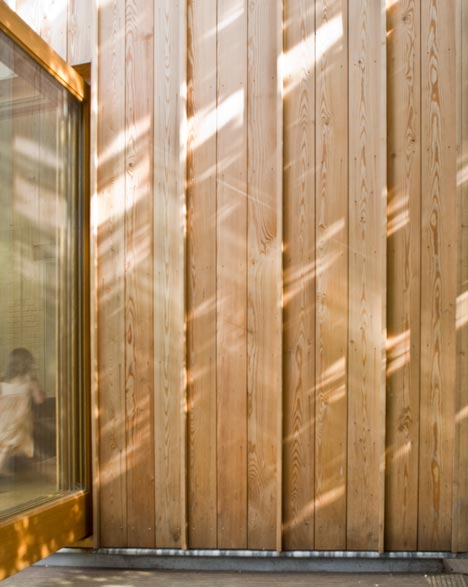
The larch was mounted onto battens fixed to Panelvent sheathing boards, which have a high racking strength but also allow for a water vapour open construction. Panelvent itself is made from wood chips and forest thinings, utilising a unique Masonite defibration system to combine low formaldehyde emissions in use and low embodied energy in manufacture.
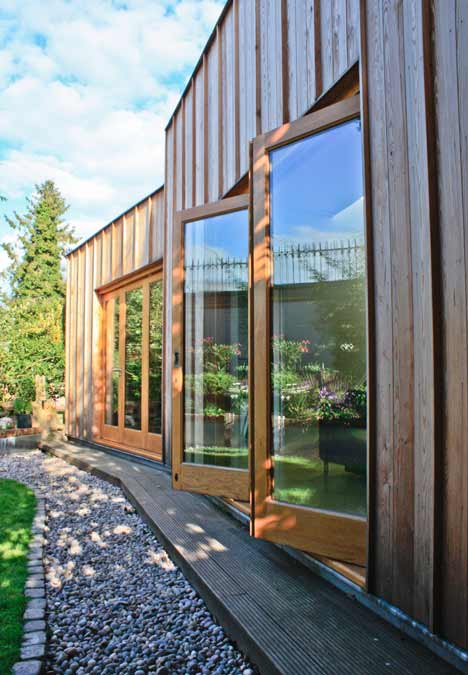
The oak timber frame is made up of lattice structures which were so beautiful that during the build it was tempting to leave parts of the frame exposed on the inside of the extension. However, we decided to stay true to the concept of a wrapped timber box.
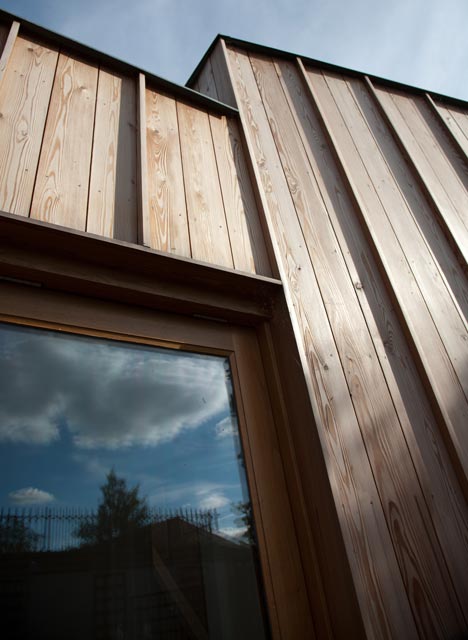
The folding sliding doors and windows where constructed out of oak and are top hung. The doors are easy to open and fold away entirely to allow the garden to become part of the living space.
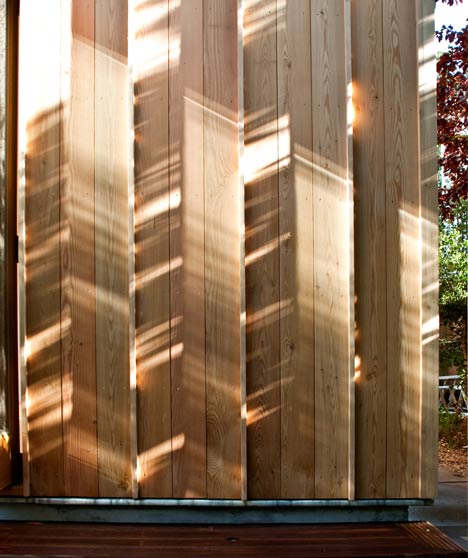
The floor was constructed out of a hard wearing birch plywood which was sealed with an acrylic coating which is both easy to clean and protects the surface from any moisture ingress.
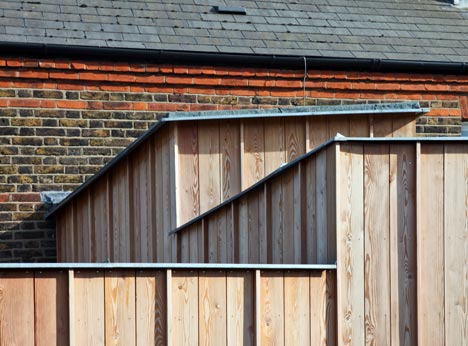
Existing openings inside the structure are framed in MDF, painted white to blend in with existing brickwork, also painted white, to reflect as much light as possible into the interior. A low step made of thermowood decking links the house to the garden and provides a low bench for seating.
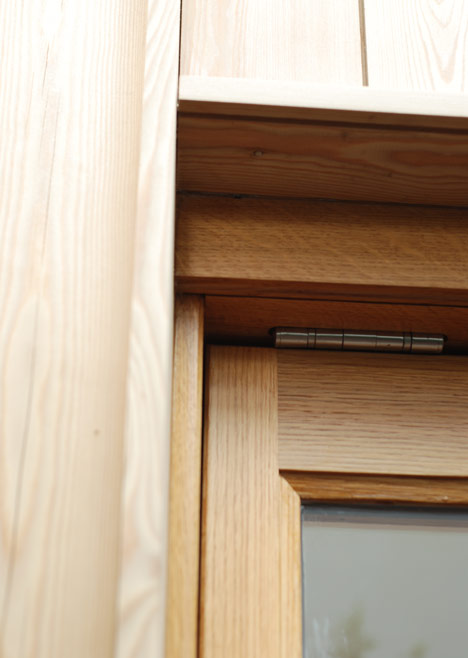
A new staircase constructed from birch plywood connects to the mid landing of the existing staircase, giving the up and over feel, which provided the original inspiration for the extension.
Products used:
Structure: oak framing for walls and roof
Floor: birch plywood with acrylic sealant
Staircase: birch plywood painted
Decking: Thermowood decking
Timber cladding: untreated Siberian larch mounted on double battens on panelvent boards